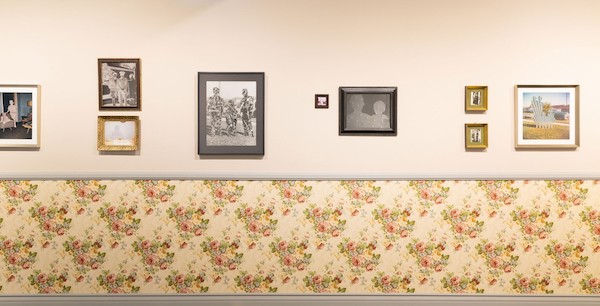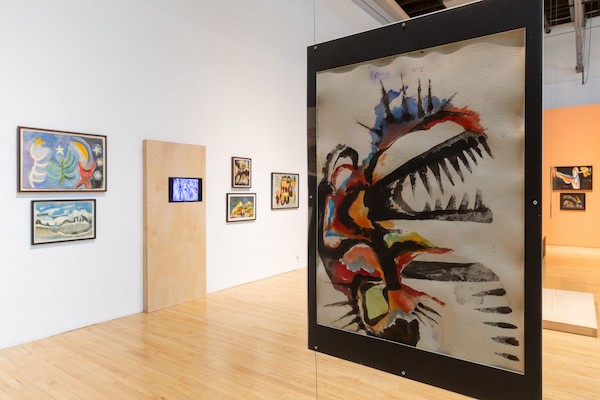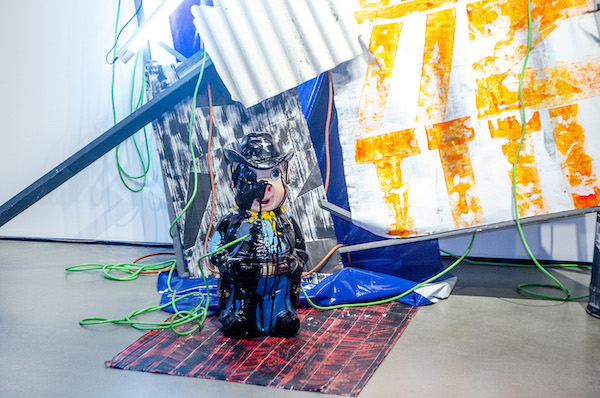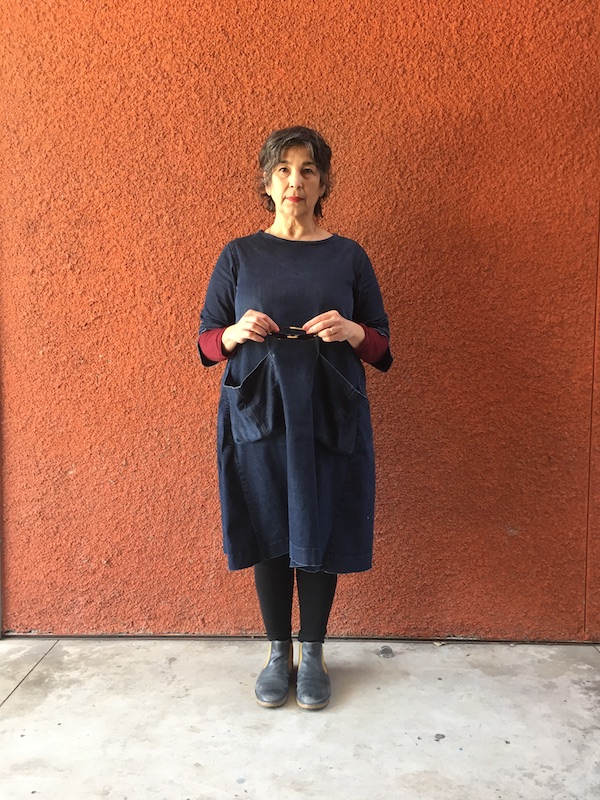Irene Tsatsos is the director of exhibition programs and chief curator at the Armory Center for the Arts in Pasadena.
Sandra de la Loza’s current beautiful photographic exhibition “Mi Casa Es Su Casa” seems highly prescient. How did it come about, and how do you feel it ties into these anxious times politically and in terms of immigration?
I knew about that body of work from the early 2000s. It’s almost 20 years old, and it remains as relevant as when it was first made. I love the figures that are effaced, yet filled in with images and textures that are tangible, that exist physically in the community. The work evokes immigrant experiences and their legacies that are personally familiar, with struggles around identity, with wanting to retain and cultivate aspects of one’s cultural heritage, and at the same time, feeling an urgent desire to integrate into dominant culture, and the tensions and traumas that can arise from that conflict.

Sandra de la Loza: Mi Casa Es Su Casa.
You’re also exhibiting innovative and under-recognized artist Sara Kathryn Arledge. Do you feel that this exhibition also really fits the current zeitgeist in terms of the growing strength of women in the arts, and hopefully, politics?
This exhibition has been in the works for more than five years, so it’s not a response to specific conversations of the day, such as #MeToo. That said, it certainly resonates—and of course the timing is always right for a conversation about feminism. Arledge can be seen as a feminist icon, an artist who advocated for herself, mentored others, and was deeply devoted to producing her work despite many adversities, to keep herself intact. She was active from the 1930s through the 1980s, and she addressed issues of gender, gender representation and the contradictions of cultural inequities in her films, her works on paper and her writing—before these subjects were overt in contemporary art discourses.

Sara Kathryn Arledge: Serene for the Moment.
You’ll also be showcasing the MexiCali Biennial’s “Calafia Manifesting the Terrestrial Paradise” upcoming border interventions and exhibitions in collaboration with the Armory Center for the Arts. How do you feel the Biennial is helping to focus attention on the region and support it?
There’s a lot of things I like about the MexiCali Biennial—its history, and roots as artist projects. And I am very drawn to the complicated myth of Califia as a way to dig into some of today’s conditions. I know the organizing artists and curators, I’ve worked with them, and I admire their process, rigor and commitment to their practices and visions.

Artwork by Luis Alonso Sanchez from the MexiCali Biennial 2018.
What are your plans for the coming year for exhibitions and beyond?
At the moment, I’m particularly excited about an upcoming exhibition with Tanya Aguiñiga, an artist and activist who uses traditional weaving techniques to make art, and cultivate intimate, interpersonal exchanges. I’ve invited her to use the trusses of the Armory’s 30-feet bow-truss ceilings as a loom, so there will be a giant new site-responsive work produced collaboratively with members of her team and the Armory community. We’ll also include documentation and ephemera from Tanya’s project AMBOS, or Art Made Between Opposite Sides, which involved artistic interventions on both sides of the entire length of the U.S./Mexico Border, conducted while traveling in a van from Tijuana and San Diego to Matamoros, Mexico and Brownsville, Texas.


